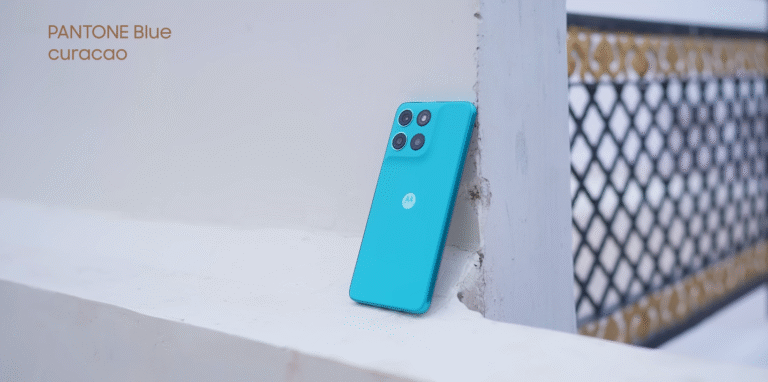OnePlus 15 vs Motorola Edge 60 Ultra: premium specs at different brands

Comparing two powerhouse flagships with different design philosophies
The OnePlus 15 and Motorola Edge 60 Ultra represent two very different approaches to the premium smartphone experience in 2025. Both pack top-tier specifications, sleek designs, and cutting-edge technology, but their priorities vary — OnePlus focuses on endurance and refinement, while Motorola pushes camera innovation and multimedia power. For UK buyers, this matchup highlights what each brand brings to the table at the high end.
The OnePlus 15 leads with its impressive 7,300 mAh silicon-carbon dual-cell battery, the largest in any mainstream flagship. Combined with 120W wired and 50W wireless charging, it offers unmatched battery life and convenience. Motorola’s Edge 60 Ultra, by contrast, includes a smaller 4,600 mAh unit but supports faster 150W charging, capable of reaching 100 percent in under 20 minutes. It’s built for speed, not endurance, making it ideal for users who prefer quick top-ups rather than all-day reserves.
Both devices excel in display technology. The OnePlus 15 features a 6.78-inch LTPO AMOLED panel with a 1.5K resolution and 165Hz refresh rate. Its adaptive display automatically scales refresh between 1Hz and 165Hz depending on usage, ensuring a balance between smoothness and efficiency. Motorola’s Edge 60 Ultra sports a slightly larger 6.82-inch OLED screen with the same 165Hz refresh, making it equally fluid. However, OnePlus’s display delivers higher peak brightness and better adaptive power management, giving it an advantage in outdoor visibility and battery conservation.

Performance is another area where both flagships shine. The OnePlus 15 is powered by Qualcomm’s Snapdragon 8 Elite Gen 5 processor, the most advanced chipset currently available for Android devices. It’s built on a 3nm process and offers cutting-edge AI acceleration, thermal efficiency, and gaming power. Motorola’s Edge 60 Ultra uses a slightly older Snapdragon 8 Gen 3 or Gen 2 depending on region, still capable but not quite as efficient or future-proof as the OnePlus chip.
Camera systems mark one of the biggest differences between the two. The Motorola Edge 60 Ultra boasts a headline-grabbing 200MP main sensor, paired with 50MP ultra-wide and 50MP telephoto lenses. This setup is designed for users who love high-resolution detail and advanced zoom capabilities. OnePlus, meanwhile, keeps its trusted triple 50MP configuration, fine-tuned in collaboration with Hasselblad. Its imaging focuses on accuracy, natural colours, and dynamic range, producing consistently balanced shots without over-processing.
Design philosophy separates the two brands even further. The OnePlus 15’s “Sand Storm” edition showcases a fibreglass back with an aerospace-grade Micro-Arc Oxidation coating, giving it exceptional scratch and wear resistance. It’s a phone built for longevity, with a sleek matte texture that resists fingerprints. The Motorola Edge 60 Ultra opts for a glass and metal frame with soft curvature, delivering a glossy, premium aesthetic that feels elegant but slightly less durable in the long run.
In terms of software, both devices run Android 15 out of the box, but the experience differs drastically. OnePlus’s OxygenOS 16 continues its legacy of being fast, clean, and minimal, with strong integration of AI-driven battery optimisation and performance management. Motorola’s My UX stays close to stock Android but adds a few multimedia-focused gestures and camera enhancements. OnePlus promises five years of updates, while Motorola currently offers three, giving OnePlus an edge in long-term support.
Audio and connectivity features are flagship-standard across both. They include dual stereo speakers, IP68 water and dust resistance, 5G, Wi-Fi 7, and NFC. However, OnePlus enhances immersion with a more advanced haptic engine and AI-based call noise suppression, while Motorola delivers slightly louder speaker output and Dolby Atmos tuning for cinema-style sound.
For UK buyers, pricing will likely play a decisive role. The OnePlus 15 is expected to launch around £850, while the Motorola Edge 60 Ultra could retail for slightly lower, near £800. That small difference may not matter for some, but the extra battery capacity, superior software support, and overall polish of the OnePlus 15 make it the more complete premium choice for long-term use.
In conclusion, both phones offer flagship performance with unique strengths. The OnePlus 15 dominates in endurance, display quality, and long-term reliability, while the Motorola Edge 60 Ultra wins in camera versatility and fast charging. If you want a durable, balanced, and future-ready flagship, the OnePlus 15 is the smarter investment. But if photography and quick power-ups define your daily use, Motorola’s latest flagship delivers an equally exciting, feature-packed experience at a competitive price.






